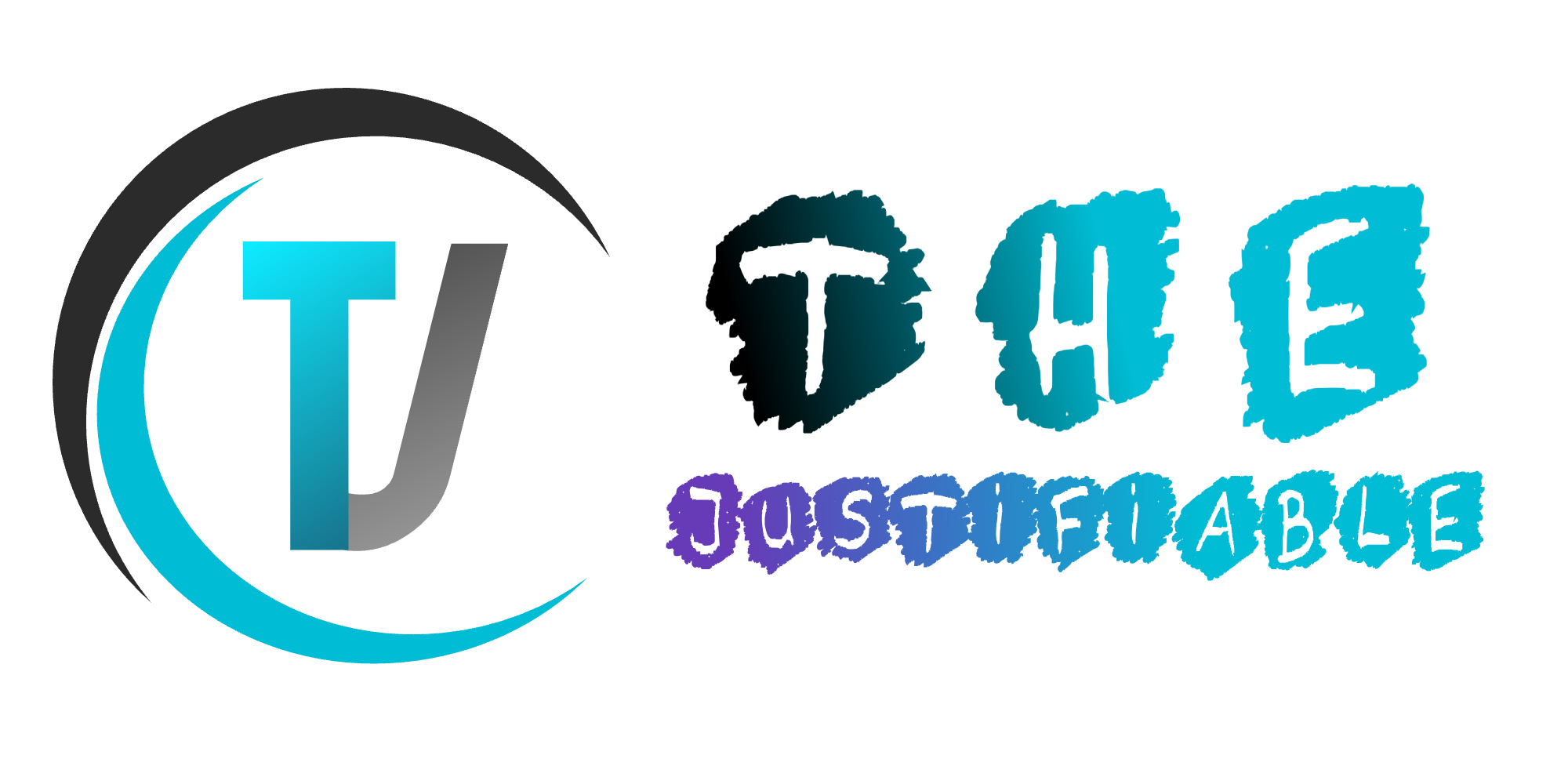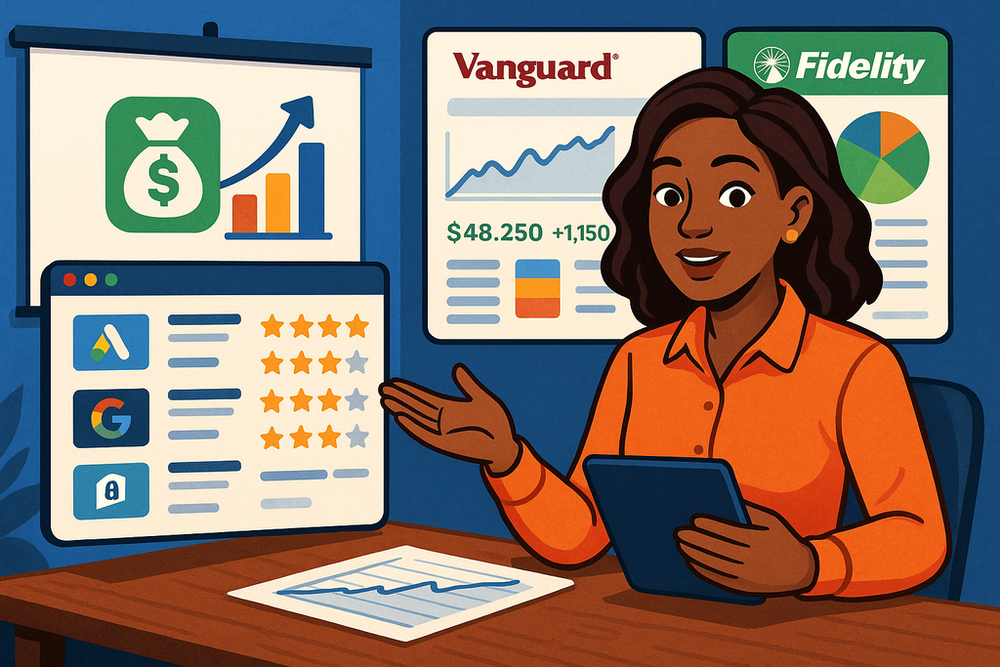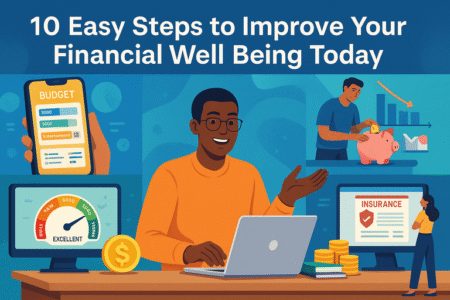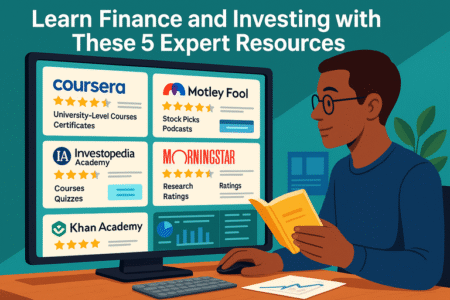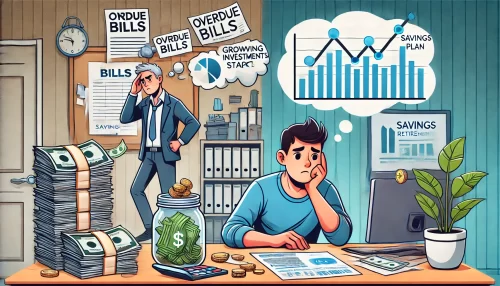Table of Contents
The best financial advice often comes from the simplest truths, yet those lessons stick with us for a lifetime. What if one small shift in your money habits could completely change your financial future? How do you know which advice is worth following, and why does some wisdom stand the test of time while other tips fade away?
This article dives into the best financial advice I ever received, breaks down why it works, and shows you how to apply it to your own life with confidence.
Spend Less Than You Earn And Build Discipline
Living within your means isn’t just about pinching pennies—it’s about creating breathing room in your life. When you consistently spend less than you earn, you unlock real freedom to make choices without money holding the reins.
Why Living Below Your Means Builds Real Freedom
I used to think “budgeting” meant stripping away everything fun, but it’s really about buying yourself options. When you’re not drowning in bills or chasing debt, you gain the power to say yes to things you actually care about. Living below your means gives you:
- Flexibility to handle emergencies without stress.
- Space to invest in long-term goals, like a home, travel, or retirement.
- Confidence knowing you’re not one paycheck away from panic.
Think about it this way: spending everything you earn is like running on a treadmill—fast-paced but going nowhere. When you spend less, you’re stepping off and actually walking toward your destination. That’s what builds real freedom over time.
How To Create A Simple Spending Plan That Works Long-Term
Here’s the problem with most “budgeting apps” or spreadsheets: they’re overcomplicated. A sustainable spending plan doesn’t need 12 categories and endless tracking—it needs clarity. I suggest starting with the 50/30/20 method:
- 50% of your income goes to needs (rent, food, utilities).
- 30% to wants (entertainment, dining, hobbies).
- 20% to savings and debt repayment.
The trick is to adapt those percentages to your reality. If your rent is high, maybe your “wants” bucket shrinks for now. I recommend setting up your plan inside an app like YNAB (You Need a Budget) or even just Google Sheets. What matters is visibility—you should be able to glance at it and know where your money stands.
Over time, adjust as your income grows. A spending plan isn’t a cage, it’s more like a compass. It points you in the right direction while still letting you choose your path.
Practical Ways To Cut Costs Without Feeling Deprived
The phrase “cut costs” often makes people think of cold showers and instant noodles, but it doesn’t have to be miserable. I believe the smartest approach is trimming expenses that don’t add value to your life.
- Audit subscriptions: I found I was paying for three streaming services but only using one. Canceling saved me $40/month instantly.
- Cook smart, not bland: Batch cooking pasta sauces or stir-fries saves money without killing flavor.
- Shop intentionally: Ever notice how “just browsing” turns into $80 at Target? Make lists and stick to them.
- Redefine treats: Instead of $6 lattes every day, make coffee at home and treat yourself once a week—it feels more special that way.
Cutting costs doesn’t mean deprivation; it means choosing what actually matters. That mindset shift keeps you disciplined without feeling punished.
Pay Yourself First Before Anything Else
If spending less than you earn creates breathing room, paying yourself first ensures that room doesn’t disappear the moment a new expense shows up. It’s about making savings non-negotiable, not an afterthought.
The Psychology Of Prioritizing Savings Over Spending
Here’s the reality: if you wait until “after the bills” to save, there’s rarely anything left. That’s not because you’re bad with money—it’s because spending expands to fill the space it’s given. When you flip the script and pay yourself first, you’re telling your brain: “future me matters.”
This shift creates momentum. Even if it’s just $25 a paycheck, that action builds identity—you become someone who saves. And once you see your balance grow, it reinforces the behavior. Saving becomes a habit, not a chore.
How Automating Savings Creates Consistency And Growth
The easiest way to actually stick to this advice is to remove willpower from the equation. I advise setting up an automatic transfer from your checking to savings the moment your paycheck hits. Treat it like a bill you can’t skip.
For example:
- Direct deposit 10% of your paycheck straight into a high-yield savings account.
- Use bank tools like “round-ups,” where every purchase is rounded up and the spare change is saved automatically.
- If your employer allows it, split your paycheck so a portion never even touches your spending account.
Automation works because it bypasses excuses. You don’t think about saving—you just do it. Over months and years, consistency compounds into serious growth.
Why Small, Regular Contributions Beat Occasional Large Deposits
Here’s the thing: saving $500 once a year feels nice, but it won’t build lasting security. What works is smaller, steady contributions. Imagine $50 automatically tucked away every week—that’s $2,600 in a year without you lifting a finger.
Regular contributions also smooth out the bumps. Some months you’ll have more expenses than others, but automation keeps you on track regardless. It’s like building a muscle—you get stronger from regular workouts, not occasional bursts of effort.
And if you eventually increase your contribution rate (say from 10% to 15% of income), you’ll accelerate progress without feeling the pain of a massive lifestyle change. Over time, this approach outpaces even the biggest one-off deposits.
Avoid Bad Debt And Use Credit Wisely
Debt can either work as a tool or as a trap. The key is learning which type pushes you forward and which pulls you under.
The Difference Between Good Debt And Debt That Drains You
Not all debt is created equal. Good debt is the kind that helps you build wealth or improves your earning potential. Think of a reasonable mortgage, a student loan that leads to higher income, or a small business loan that funds real growth. These are investments in your future.
Bad debt, on the other hand, is usually tied to consumption. High-interest credit cards, payday loans, or financing gadgets you don’t really need fall into this category. They drain your wealth instead of building it.
Here’s the simple test I use: if the debt creates an asset or a skill that adds long-term value, it’s likely good. If it just satisfies a short-term craving, it’s probably bad. That shift in perspective helped me stop justifying unnecessary swipes of my credit card.
Smart Habits To Keep Your Credit Score Strong
A good credit score isn’t just about bragging rights—it saves you money on interest rates, insurance, and even housing applications. Here are habits I rely on to keep mine healthy:
- Always pay at least the minimum on time (late payments crush scores).
- Keep credit utilization under 30% of your total available credit. If your card has a $5,000 limit, don’t carry more than $1,500 at a time.
- Avoid applying for too many new accounts at once—each inquiry dings your score.
- Check your credit report annually for errors. A mistake left unchecked can cost thousands over time.
I think of a credit score as a report card for how you treat lenders. Treat it well, and the system rewards you. Treat it poorly, and it punishes you quickly.
How Interest Eats Away At Your Wealth If Left Unchecked
The hidden danger of debt is compound interest—but in reverse. When you borrow, interest compounds against you, eating your future earnings before you even see them.
Take a $3,000 balance on a card with 20% interest. If you only pay the minimum each month, it could take over a decade to pay off, and you’ll shell out more in interest than the original debt. That’s money that could’ve been invested, saved, or used for real opportunities.
I suggest running your numbers through an online debt calculator. Seeing the payoff timeline in black and white can be eye-opening. Once I did that, I stopped carrying balances altogether. It wasn’t about guilt—it was about realizing how much freedom I was giving away to interest.
Invest Early To Harness Compound Growth
Investing early is one of the most powerful money moves you can make. The earlier you start, the less you actually need to invest over time to reach the same goal.
Why Time In The Market Beats Timing The Market
I’ve watched countless friends try to “wait for the perfect time” to invest, and most of them never actually start. The truth is, trying to predict markets is a losing game. Even professional fund managers get it wrong more often than they admit.
What really matters is time in the market. If you invest $200 a month for 30 years, you’ll likely end up with far more than someone who invests $500 a month but waits 10 years to start. It’s the steady compounding that works quietly in your favor.
Patience wins over prediction every time. I remind myself: “the best day to invest was yesterday, the next best is today.”
How Compound Interest Transforms Small Investments Into Wealth
Compound interest is often called the eighth wonder of the world, and for good reason. It’s money earning money, over and over again.
Imagine investing $100 a month at an average 7% annual return. After 10 years, you’d have about $17,000. After 30 years? More than $122,000. And that’s from just $36,000 of your own contributions—the rest is growth working quietly behind the scenes.
The lesson? Even small amounts matter. Don’t underestimate what $25 or $50 a week can do when given enough time.
Simple Investment Options For Beginners Who Want To Start Now
If investing feels overwhelming, I suggest starting simple. A few options I recommend:
- Employer 401(k): If your company offers a match, always contribute enough to get it. That’s free money.
- Roth IRA: Lets your investments grow tax-free. Open one in minutes through Vanguard, Fidelity, or Schwab.
- Low-Cost Index Funds: Instead of trying to pick winning stocks, buy a slice of the entire market. The S&P 500 index fund is a classic beginner option.
You don’t need to know everything to get started. I opened my first account with just $200. What matters most is building the habit, not waiting until you feel “ready.”
Protect Yourself With An Emergency Fund
Life has a way of throwing curveballs, and an emergency fund is what keeps those surprises from turning into disasters.
Why An Emergency Fund Keeps You From Falling Backward
Without a safety net, one unexpected expense can wipe out months of progress. I once had my car break down and the repair cost $1,400. If I didn’t have an emergency fund, that bill would’ve gone straight to a credit card at 19% interest. Instead, I paid cash, and life moved on.
An emergency fund gives you peace of mind. It’s less about the money itself and more about the confidence that you won’t slide backward every time life tests you.
How Much You Should Really Save For Unexpected Costs
The standard advice is 3–6 months of expenses, but here’s how I suggest tailoring it:
- If you’re single with one income: Aim closer to 6 months for extra security.
- If you have two incomes or a stable job: 3 months may be enough.
- If you’re self-employed or freelancing: Push for 9–12 months, since income can be irregular.
Even if that number feels intimidating, start small. Saving just $500 puts you ahead of the majority of Americans who don’t have even that much for emergencies. Then keep building until it feels like a true cushion.
Smart Places To Keep Your Emergency Fund Accessible And Safe
Your emergency fund should be easy to access but not so easy that you’ll dip into it for non-emergencies. I recommend:
- High-Yield Savings Accounts: They pay more interest than regular accounts and are still liquid.
- Money Market Accounts: Safe and often come with debit access for emergencies.
- Separate Bank Accounts: Keeping it away from your main checking reduces temptation.
Don’t invest your emergency fund in stocks—it needs to be stable and ready when life comes knocking. Think of it as your financial seatbelt. You hope you never need it, but you’ll be grateful it’s there.
Diversify Income And Don’t Rely On Just One Stream
Depending on a single paycheck is like balancing on one leg—it works until something knocks you off. Building multiple income streams gives you stability and freedom.
Why A Single Paycheck Isn’t Enough To Secure Your Future
Relying only on a job means your financial security is tied to someone else’s business decisions. Layoffs, recessions, or even company politics can shake your income overnight. I’ve seen friends with six-figure salaries lose jobs and scramble because everything they had depended on that one paycheck.
When you diversify, even a small side stream cushions the blow. Think of it like a table—one leg makes it wobbly, but four legs keep it steady. Even if one leg weakens, the table still stands.
Easy Side Hustles And Skills That Build Extra Income
The trick is finding something that fits your lifestyle, not adding a second full-time job. Here are a few I’ve seen work well:
- Freelance Skills: Platforms like Upwork let you offer writing, design, coding, or admin help.
- Teaching Online: If you know a subject, create a course on Teachable or tutor on Zoom.
- E-commerce: Selling print-on-demand products through Etsy or Shopify requires little upfront investment.
- Specialized Skills: Photography, web design, or even resume writing can become solid income streams.
I recommend picking one skill you already have and finding a way to monetize it. Starting small builds confidence and proof of concept.
How Passive Income Creates Safety And Flexibility
Passive income doesn’t mean “money for nothing”—it means building something once that continues to earn later. Examples include:
- Rental property (if managed well).
- Dividend-paying stocks or index funds.
- Royalties from books, courses, or digital products.
I started with dividend stocks, and while the payouts were small at first—literally $5 checks—it built a sense of momentum. Over time, those small streams grew into a safety net that made me feel less dependent on any one job.
Think Long-Term Instead Of Chasing Quick Wins
Quick money schemes look shiny, but real wealth grows steadily. Long-term thinking protects you from the emotional rollercoaster of “get rich quick.”
Why Patience Beats Gambling On Short-Term Trends
I once had a friend who jumped into crypto because he saw TikToks of people doubling their money overnight. A year later, he was down 70%. The problem wasn’t crypto itself—it was chasing short-term hype without a plan.
Patience works because markets, jobs, and even personal skills build value over time. Trying to gamble your way into wealth often backfires, while disciplined, steady progress compounds quietly in the background.
The Role Of Long-Term Planning In Financial Stability
Think of financial planning like training for a marathon instead of a sprint. You don’t need to be the fastest runner—you need to build endurance. Long-term plans help you:
- Smooth out market ups and downs.
- Prepare for life milestones (kids, buying a home, retirement).
- Reduce stress by knowing you’re moving in the right direction.
I believe the best tool here is mapping goals 5, 10, and 20 years out. Not in extreme detail—just enough to give your money a job. When you know what you’re running toward, it’s easier to avoid distractions.
How To Align Spending And Investing With Your Future Goals
Here’s where it gets practical: every dollar you spend or invest should connect to your goals. Ask yourself: “Does this move me closer to where I want to be?”
- If your goal is early retirement, focus on maxing out retirement accounts and living below your means.
- If your goal is travel, build a dedicated savings bucket just for that—so you can enjoy it guilt-free.
- If your goal is security, prioritize debt freedom and emergency savings.
I’ve found that when money aligns with values, spending feels more intentional, and investing feels less like a sacrifice.
Seek Knowledge And Never Stop Learning About Money
Money rules change. What worked 20 years ago doesn’t always work today. Staying curious keeps you prepared and confident.
Why Financial Education Pays Dividends For Life
Unlike a one-time paycheck, financial knowledge compounds. The more you understand about taxes, investing, or money psychology, the more control you gain over your future.
For example, when I first learned about Roth IRAs, I realized I could grow money tax-free for decades. That single insight could mean tens of thousands more in retirement. One piece of knowledge literally changed my life trajectory.
Books, Podcasts, And Tools That Build Smart Money Habits
There’s no shortage of resources, but I suggest starting with a few that simplify complex topics:
- Books: “The Millionaire Next Door” (frugality insights), “I Will Teach You To Be Rich” (practical systems).
- Podcasts: “ChooseFI” (financial independence), “The Dave Ramsey Show” (debt freedom strategies).
- Tools: Apps like Mint or YNAB for budgeting, Personal Capital for tracking investments.
I advise treating these as ongoing learning, not one-time reads. Money habits are like muscles—they grow stronger the more you train them.
How To Stay Adaptable As Financial Rules And Markets Change
Tax laws shift. Markets crash. New technologies emerge. The people who do best aren’t the ones who predict perfectly—they’re the ones who adapt quickly.
- Review your finances at least once a year. Adjust contributions, recheck insurance, rebalance investments.
- Keep learning about new opportunities (for example, high-yield savings accounts today often pay 10x more than traditional banks).
- Surround yourself with a community—online groups or local meetups—where you can trade knowledge and stay motivated.
I believe money confidence isn’t about knowing everything—it’s about being willing to learn, pivot, and grow. That mindset makes you resilient no matter what changes come.
Pro tip: The best financial advice often sounds simple—save, invest, diversify—but it works because it’s timeless. Master the basics, keep learning, and your money will start working for you instead of the other way around.

